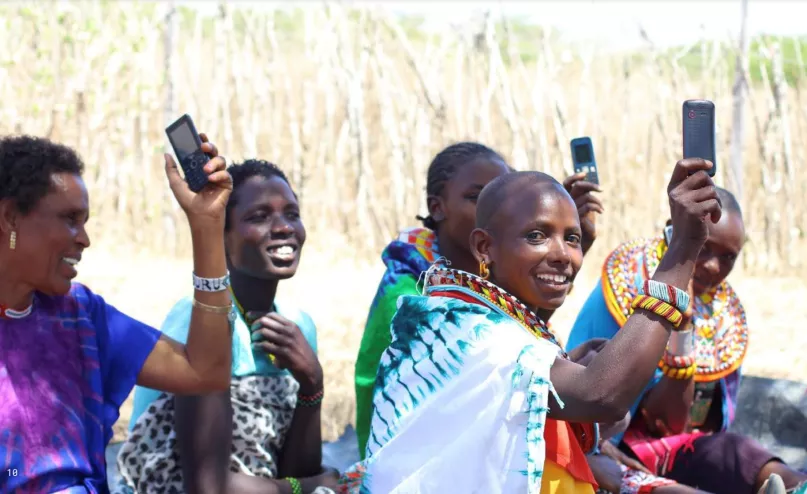Four Ways to Design Agent Networks That Work for Women

Over the past decade, enormous resources and energy have been put into increasing women’s access to financial services. However, the gender gap in account ownership has remained steady at 8 percent worldwide. The reasons for the gap are well documented — from lack of access to phones, to lack of broadband access for internet and cell, and, of course, in many contexts, strong gender and societal norms that money is the domain of men. So what can we do to truly move the needle?
The Women and Money program is a four-year initiative funded by the Bill & Melinda Gates Foundation that aims to understand the complex realities that keep women excluded from digital financial services (DFS) and create solutions to build their agency, voice and influence over money. Over the last three years, we have conducted primary research in seven countries (Nigeria, Kenya, Tanzania, Pakistan, Bangladesh, India and Indonesia), done a global data analysis led by Driven Data and embedded gender expertise into our process with Kore Global.
Through this research, we have learned a great deal about how we can increase access to DFS by building more intentional, gender-focused agent networks that work for women. In this blog post, we share four key takeaways from our research on how to do this, directed at both microfinance institutions and mobile network operators:
1. Trusted and safe agents
What we have heard loud and clear from customers is that building a trusted relationship with agents is critical for any customer— but especially for women. Trust is formed in a variety of ways, whether it is an agent that speaks the same dialect, an agent who is a neighbor or family member, an agent that helps someone in a tricky situation, or the gender of the agent. The only major gender difference we saw in women’s preferences to agents was when it came to learning— by and far, women preferred to learn from other women. But, once confident in making transactions, women didn’t have any preference on gender of an agent— trust trumped all other factors.
Consider ways to:
- Bring agents to locations and areas that women deem inherently safe and trustworthy, like their savings groups and places of worship. Or, introduce the DFS agents via organizations that are already trusted and doing work in the community, like Boma Project in Northern Kenya.
2. Build on-ramps for learning
The income agents receive from offering financial services is helpful, but not enough to live on. Agents are therefore often merchants first, and many times have several businesses operating simultaneously. So when the onus of teaching falls on the agent, it comes at the expense of increased profits. As agent networks invest in increasing the number of women agents to serve women customers, who often need more support, this makes for an even more inequitable scenario that sets women agents up to fail.
Consider ways to:
- Identify win-win collaborations with actors that are already on the ground: local partners, startups or community workers that can onboard and then link to cash-in-cash-out (CICO) services. In the BRAC Shakti program, for example, BRAC partnered with bKash, a Bangladeshi mobile money service. bKash was excited to grow a rural customer base, and BRAC was excited to build on-ramps to their microfinance services for women.
- Compensate roles that onboard and train users. Tigo Cash in Ghana has done this in a couple of ways - by paying freelance promoters to do customer acquisition or experimenting with sales and marketing staff doing customer-facing support.
3. Build digital confidence
A very real skills gap prevents people from accessing digital financial services, as these services require a level of literacy, numeracy, mobility and mobile phone access that women don’t always have. From digitizing school fees, where school teachers become the de facto DFS teachers, to the extensive work of wage digitization in Bangladesh factories, these support networks help build digital literacy and confidence.
Consider ways to:
- Alter your product development cycle to design for low-literacy and rural first.
- Use tools like Digital Confidence Toolkit to get inspiration on existing solutions for low-literacy users or to learn how to run a digital confidence sprint on your team.
4. Bring CICO closer to her
The reality is, in certain contexts, CICO even being one kilometer away is still a major challenge if a woman's mobility is limited or the agent is located in a place deemed unsafe or not respectable for women. The key is to build agent shops in places that are safe and already frequented by women. In Pakistan, this may be tailor shops; in other contexts this may be health clinics or schools.
While designing these new spaces, it is important to remember that the distance between a woman and a man matters even more significantly in conservative cultures. When we learn about something new on a phone or small screen, people have a tendency to stand shoulder to shoulder, which is not acceptable in certain cultures. Physical barriers like counters, open spaces for the transactions to happen, or alternative ways to walk through a digital experience, can be critical for women interacting with male agents in these contexts.
Consider ways to:
- Offer agents multiple products (e.g. delivery of goods and DFS) so that the business can become more economically viable and there are more channels to onboard new users.
- Bring CICO services closer to rural women. We have seen this work in Indonesia, and in new pilots like Boda Pesa in Northern Kenya, where Pesakit is testing a roving agent model.
Let’s start by investing in ways to build new on-ramps for learning, increase her digital confidence, and bring CICO closer to her.


